勉强会のこちら侧とあちら侧
7 likes3,050 views
第97回 PHP勉強会@東京?クリスマスイブスペシャル? https://phpstudy.doorkeeper.jp/events/36057 の発表資料です
1 of 61
Download to read offline

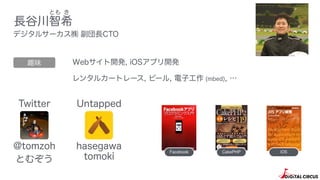


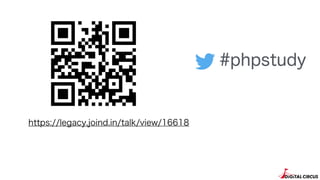
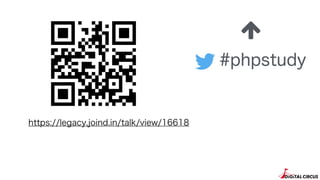







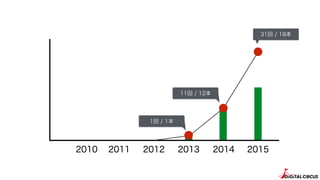


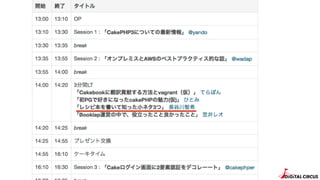








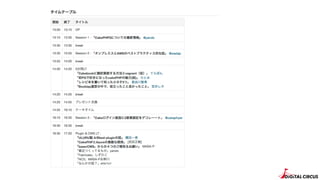
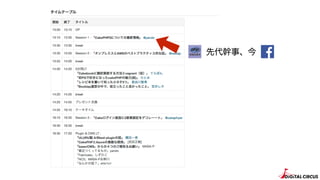


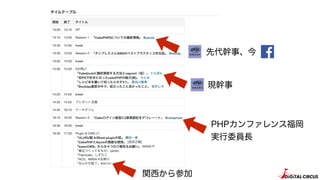






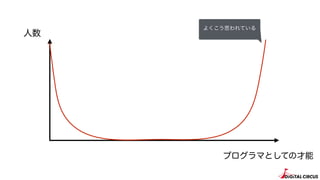
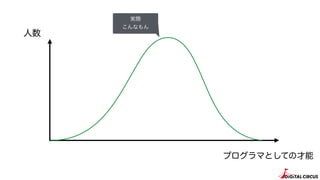
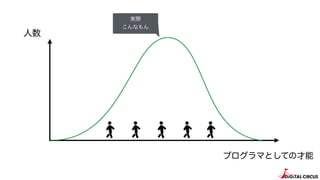






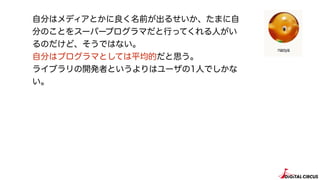
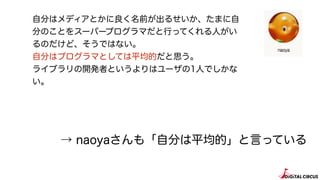














Ad
Recommended
#yidev 第25回勉強会 オープニング
#yidev 第25回勉強会 オープニングTomohiro Kumagai
?
2016/11/26 に開催した「第25回 yidev 横浜 iPhone 勉強会」のオープニングで使ったスライドです。開催中のツイートまとめは http://togetter.com/li/1052956みんなで Swift 復習会での談笑用スライド – 3rd #minna_de_swift
みんなで Swift 復習会での談笑用スライド – 3rd #minna_de_swiftTomohiro Kumagai
?
This code defines a tuple with an integer status code and string message, a function that returns a tuple with status 200 and message "OK" when called, and calls that function to get the tuple and assign its values to variables. It also defines an Optional enum that can be none or contain a wrapped value.Java in the Past, Java in the Future
Java in the Past, Java in the FutureYuichi Sakuraba
?
The document shows an example of converting an external iteration over a list using a for loop into an internal iteration using Java streams. First, a for loop is used to iterate over a list of numbers and add each number multiplied by 2 to a new list. Then, this is rewritten using streams to map each number by multiplying it by 2 and collecting the results into a new list, eliminating the need for an anonymous class.みんなで Swift 復習会での談笑用スライド – in 札幌 1st′ #minna_de_swift
みんなで Swift 復習会での談笑用スライド – in 札幌 1st′ #minna_de_swiftTomohiro Kumagai
?
This document introduces some basic variable declarations in Swift including let constants for pi and attempts, a var variable for amount, and defines a maxCapacity constant as an Int with an initial value of 100 that is later reassigned to 20. It also declares a price constant as a Double.みんなで Swift 復習会での談笑用スライド – 5th #minna_de_swift
みんなで Swift 復習会での談笑用スライド – 5th #minna_de_swiftTomohiro Kumagai
?
This document defines various Swift variables and constants, performs printing operations, and demonstrates string interpolation. It also shows how to extend a type to conform to the CustomPlaygroundQuickLookable protocol.Swift + GraphQL
Swift + GraphQLSommer Panage
?
The document presents an overview of using GraphQL with Swift, highlighting its advantages over REST, such as fewer round trips and the ability to request exactly the needed data. It discusses model structuring for Star Wars characters, the benefits of code generation, and emphasizes the strengthening of types in the backend schema. The speaker concludes by acknowledging the ongoing evolution of tools and best practices in integrating GraphQL with Swift for mobile applications.AnyObject – 自分が見落としていた、基本の話
AnyObject – 自分が見落としていた、基本の話Tomohiro Kumagai
?
The document presents a series of code snippets demonstrating various features of Swift programming, particularly focusing on type casting and optional properties. It illustrates how to manage methods and their dispatching, including dynamic and non-dynamic dispatch, as well as the use of optional chaining when calling methods. Overall, it emphasizes the flexibility of method invocation based on object types and functionality in Swift.Swift 3 で新しくなったところ - 表面から見えにくいところを中心に紹介 #ISAOcorp
Swift 3 で新しくなったところ - 表面から見えにくいところを中心に紹介 #ISAOcorpTomohiro Kumagai
?
Swift 3 の新しくなったところのうちから、目立つところを6つほど、意味的な観点を大事にしながらざっくり紹介しました。2016/09/28 ISAO meetup でお話しした発表資料です。みんなで Swift 復習会での談笑用スライド – 2nd #minna_de_swift
みんなで Swift 復習会での談笑用スライド – 2nd #minna_de_swiftTomohiro Kumagai
?
This document contains code snippets from Swift including defining a ViewController class that sets a title label on load, declaring variables and constants of different types, and a struct with methods and a mutable property.Spring ?? Kotlin #jjug
Spring ?? Kotlin #jjugToshiaki Maki
?
The document discusses Kotlin support in Spring Framework 5. It covers how Kotlin can be used with Spring Boot and Spring's programming model through features like extension functions and reified type parameters. It provides code examples of using Kotlin idioms with Spring components like the application context, JdbcTemplate, and RestTemplate to make the code more concise and readable. It also briefly mentions new features in Spring Framework 5 like reactive support using Spring WebFlux and using router functions with Kotlin.NS Prefix - そこから見渡す Swift 3 の景色 #startup_mobile
NS Prefix - そこから見渡す Swift 3 の景色 #startup_mobileTomohiro Kumagai
?
Swift 3 で NS Prefix が消去されたことについて、ざっくり広めに LT してきました。単純に消えるだけじゃない大きな変化、調べててなかなか面白かったです。
2016/10/01 第一回スタートアップiOS/Android勉強会 での発表資料です。Agile, Software Engineering, Process Kaizen. They mix like oil and water ?
Agile, Software Engineering, Process Kaizen. They mix like oil and water ?Kenji Hiranabe
?
SPI Japan 2016, keynote. Oct.12, 2016Implementing DDD Concepts in PHP
Implementing DDD Concepts in PHPSteve Rhoades
?
This document provides an overview of key concepts in Domain-Driven Design (DDD) including the ubiquitous language, bounded contexts, value objects, entities, repositories, collections, mappers, identity maps, units of work, and services. It explains that DDD is a set of principles and patterns that help developers create elegant systems by focusing on the core domain and language of the business. It also emphasizes separating business processes into bounded contexts and using ubiquitous language consistently throughout the code.演题:価値のデザインからはじめるビジネス企画(前编解説)
演题:価値のデザインからはじめるビジネス企画(前编解説)Hagimoto Junzo
?
ビジネス企画メソッド(匠Method for Service)のプレゼンテーション資料に解説を付けたものを公開します。Swift 3 その基本ルールを眺める #cswift
Swift 3 その基本ルールを眺める #cswiftTomohiro Kumagai
?
そろそろ Swift 3.0 のことも整理しておきたいなと思って、まずは主に Swift 3 の展望と、言語の雰囲気を左右するガイドライン周りを調べてみました。Client-Side Deep Learning
Client-Side Deep LearningShuichi Tsutsumi
?
The document discusses client-side deep learning and introduces MPSCNN, a library that allows running convolutional neural networks on iOS devices using Metal Performance Shaders. MPSCNN can import trained models from frameworks like TensorFlow and run them to perform tasks like object detection on images at 60 times per second. Client-side deep learning could enable new mobile applications for areas like self-driving cars, AI assistants, and cancer detection by taking advantage of on-device processing power.痴颁「もしかして...」惭辞诲别濒「私たち...」「「入れ替わってるー!?」」を前前前世から防ぐ方法
痴颁「もしかして...」惭辞诲别濒「私たち...」「「入れ替わってるー!?」」を前前前世から防ぐ方法Kenji Tanaka
?
The document describes a TimelineTableViewController class that is responsible for displaying a timeline. It initializes a TimelinePresenter when loaded, which handles fetching the timeline data and notifying the view controller. The presenter calls a TimelineUseCase to retrieve the timeline and then uses the view controller as an output to update the UI, such as showing/hiding empty and ad views depending on the timeline contents.顿辞肠办别谤は2016年の秋现在どのような状况なのか~忙しい人の5分で分かる顿辞肠办别谤~
顿辞肠办别谤は2016年の秋现在どのような状况なのか~忙しい人の5分で分かる顿辞肠办别谤~Masahito Zembutsu
?
Container SIG Meet-up 2016 Fall @ Tokyo
Oct 6, 2016
Container SIG Meet-up 2016 Fall - connpass
http://connpass.com/event/40320/ドメイン駆動で開発する ラフスケッチから実装まで
ドメイン駆動で開発する ラフスケッチから実装まで増田 亨
?
ドメイン駆動設計で、モデリングをどうやっているか、それをどう実装に結びつけているかの事例紹介。 RDRA+ICONXをベースに、より機敏なやり方への挑戦。実践的なオブジェクト指向設計。エンジニアのお祭り
エンジニアのお祭りTomoki Hasegawa
?
InnoCAFE#16 新年の抱負LT大会 の発表資料です。 #innocafe
https://innovator.doorkeeper.jp/events/35787More Related Content
Viewers also liked (20)
AnyObject – 自分が見落としていた、基本の話
AnyObject – 自分が見落としていた、基本の話Tomohiro Kumagai
?
The document presents a series of code snippets demonstrating various features of Swift programming, particularly focusing on type casting and optional properties. It illustrates how to manage methods and their dispatching, including dynamic and non-dynamic dispatch, as well as the use of optional chaining when calling methods. Overall, it emphasizes the flexibility of method invocation based on object types and functionality in Swift.Swift 3 で新しくなったところ - 表面から見えにくいところを中心に紹介 #ISAOcorp
Swift 3 で新しくなったところ - 表面から見えにくいところを中心に紹介 #ISAOcorpTomohiro Kumagai
?
Swift 3 の新しくなったところのうちから、目立つところを6つほど、意味的な観点を大事にしながらざっくり紹介しました。2016/09/28 ISAO meetup でお話しした発表資料です。みんなで Swift 復習会での談笑用スライド – 2nd #minna_de_swift
みんなで Swift 復習会での談笑用スライド – 2nd #minna_de_swiftTomohiro Kumagai
?
This document contains code snippets from Swift including defining a ViewController class that sets a title label on load, declaring variables and constants of different types, and a struct with methods and a mutable property.Spring ?? Kotlin #jjug
Spring ?? Kotlin #jjugToshiaki Maki
?
The document discusses Kotlin support in Spring Framework 5. It covers how Kotlin can be used with Spring Boot and Spring's programming model through features like extension functions and reified type parameters. It provides code examples of using Kotlin idioms with Spring components like the application context, JdbcTemplate, and RestTemplate to make the code more concise and readable. It also briefly mentions new features in Spring Framework 5 like reactive support using Spring WebFlux and using router functions with Kotlin.NS Prefix - そこから見渡す Swift 3 の景色 #startup_mobile
NS Prefix - そこから見渡す Swift 3 の景色 #startup_mobileTomohiro Kumagai
?
Swift 3 で NS Prefix が消去されたことについて、ざっくり広めに LT してきました。単純に消えるだけじゃない大きな変化、調べててなかなか面白かったです。
2016/10/01 第一回スタートアップiOS/Android勉強会 での発表資料です。Agile, Software Engineering, Process Kaizen. They mix like oil and water ?
Agile, Software Engineering, Process Kaizen. They mix like oil and water ?Kenji Hiranabe
?
SPI Japan 2016, keynote. Oct.12, 2016Implementing DDD Concepts in PHP
Implementing DDD Concepts in PHPSteve Rhoades
?
This document provides an overview of key concepts in Domain-Driven Design (DDD) including the ubiquitous language, bounded contexts, value objects, entities, repositories, collections, mappers, identity maps, units of work, and services. It explains that DDD is a set of principles and patterns that help developers create elegant systems by focusing on the core domain and language of the business. It also emphasizes separating business processes into bounded contexts and using ubiquitous language consistently throughout the code.演题:価値のデザインからはじめるビジネス企画(前编解説)
演题:価値のデザインからはじめるビジネス企画(前编解説)Hagimoto Junzo
?
ビジネス企画メソッド(匠Method for Service)のプレゼンテーション資料に解説を付けたものを公開します。Swift 3 その基本ルールを眺める #cswift
Swift 3 その基本ルールを眺める #cswiftTomohiro Kumagai
?
そろそろ Swift 3.0 のことも整理しておきたいなと思って、まずは主に Swift 3 の展望と、言語の雰囲気を左右するガイドライン周りを調べてみました。Client-Side Deep Learning
Client-Side Deep LearningShuichi Tsutsumi
?
The document discusses client-side deep learning and introduces MPSCNN, a library that allows running convolutional neural networks on iOS devices using Metal Performance Shaders. MPSCNN can import trained models from frameworks like TensorFlow and run them to perform tasks like object detection on images at 60 times per second. Client-side deep learning could enable new mobile applications for areas like self-driving cars, AI assistants, and cancer detection by taking advantage of on-device processing power.痴颁「もしかして...」惭辞诲别濒「私たち...」「「入れ替わってるー!?」」を前前前世から防ぐ方法
痴颁「もしかして...」惭辞诲别濒「私たち...」「「入れ替わってるー!?」」を前前前世から防ぐ方法Kenji Tanaka
?
The document describes a TimelineTableViewController class that is responsible for displaying a timeline. It initializes a TimelinePresenter when loaded, which handles fetching the timeline data and notifying the view controller. The presenter calls a TimelineUseCase to retrieve the timeline and then uses the view controller as an output to update the UI, such as showing/hiding empty and ad views depending on the timeline contents.顿辞肠办别谤は2016年の秋现在どのような状况なのか~忙しい人の5分で分かる顿辞肠办别谤~
顿辞肠办别谤は2016年の秋现在どのような状况なのか~忙しい人の5分で分かる顿辞肠办别谤~Masahito Zembutsu
?
Container SIG Meet-up 2016 Fall @ Tokyo
Oct 6, 2016
Container SIG Meet-up 2016 Fall - connpass
http://connpass.com/event/40320/ドメイン駆動で開発する ラフスケッチから実装まで
ドメイン駆動で開発する ラフスケッチから実装まで増田 亨
?
ドメイン駆動設計で、モデリングをどうやっているか、それをどう実装に結びつけているかの事例紹介。 RDRA+ICONXをベースに、より機敏なやり方への挑戦。実践的なオブジェクト指向設計。Similar to 勉强会のこちら侧とあちら侧 (20)
エンジニアのお祭り
エンジニアのお祭りTomoki Hasegawa
?
InnoCAFE#16 新年の抱負LT大会 の発表資料です。 #innocafe
https://innovator.doorkeeper.jp/events/35787オフ?ショナル型。?なんとなく付ける ! ? 撲滅? 改訂版
オフ?ショナル型。?なんとなく付ける ! ? 撲滅? 改訂版Tomoki Hasegawa
?
第6回Swift勉強会の発表資料です。
https://atnd.org/events/61498
以前の発表資料の改訂版です。20180914 FiFiC
20180914 FiFiC祥平 中川
?
昨日の #熊呑み でお話させていただきました通り、株式会社Opening Line様の元でブロックチェーンを使ったヘルスケアアプリをリリースします。実証実験にご協力していただけれる地域、イベントを募集しております!興味をもっていただけれましたらぜひ私までDMください!
#FiFiCスクレイヒ?ンク?のススメ
スクレイヒ?ンク?のススメTomoki Hasegawa
?
スクレイピングの基本的な考え方、PHPで実装する場合の実装例、注意点など。
後日談は以下。
http://www.slideshare.net/hasegawatomoki/ss-37424274颈翱厂アフ?リ制作ツールアフ?リヒ?ルタ?ーを支える技术
颈翱厂アフ?リ制作ツールアフ?リヒ?ルタ?ーを支える技术Tomoki Hasegawa
?
第5回スタートアップiOS勉強会
http://www.zusaar.com/event/14487010
の発表資料です。
デジタルサーカスで運営しているiOSアプリ開発サービス「アプリビルダー」の紹介と、それに使用している技術のご紹介です。惭颈惭辞厂が仙台宫城から展开するビジネス机会创出へ向けたコミュニティ活动
惭颈惭辞厂が仙台宫城から展开するビジネス机会创出へ向けたコミュニティ活动Ryo Hara
?
2012年4月5日19:00よりドリームコア(岐阜県大垣市)にて开催の「モバイル?カフェ」でのプレゼン资料です。青森滨罢ヒ?シ?ネス?マッチンク?交流会
青森滨罢ヒ?シ?ネス?マッチンク?交流会Takehito Tanabe
?
青森滨罢ヒ?シ?ネス?マッチンク?交流会にて発表した「農業×IT×リモートワーク」のスライドです。
http://www.aomori-ibz.jp/it-kouryukai2014/惭颈惭辞厂大垣サテライト活动报告
惭颈惭辞厂大垣サテライト活动报告Ryo Hara
?
惭颈惭辞厂大垣サテライトの2012年度の活动と今后のイメージ。地域、分野、セクターを超えた交流?连携拠点としてソフトピアエリアから盛り上げます。贵补苍诲谤辞颈诲との共同运営につき、连名にて。浪江町タブレットで採用した、 Cordovaで作るHTML5のAndroidアプリのしくみ
浪江町タブレットで採用した、 Cordovaで作るHTML5のAndroidアプリのしくみNaoyuki Yamada
?
2016/01/31に行われた、HTML5fun福島で話したときの資料です。
CordovaとBackbone.jsの紹介をしました。30分で分かった気になるソーシャルゲーム入门
30分で分かった気になるソーシャルゲーム入门陽一 滝川
?
解説はこちら。
http://d.hatena.ne.jp/takigawa401/20120410/1334013874
※2022/04/11追記
Speaker Deckに移行しました。
https://speakerdeck.com/takigawa401/30fen-defen-katutaqi-ninarusosiyarugemuru-men会津(地方)にもっと勉强会を
会津(地方)にもっと勉强会をWataru Asai
?
エンジニア?IT従事者にとって地方で仕事をすることが(スキル的に)マイナス要因にならないように勉強会文化などを根付かせていきたいと思っています。
会津在住なので会津の話ですが、他の地方でも小さいコミュニティが増え、そのコミュニティ同士の連携が出来ればなぁなどと思っています。kintone × IoT 連携による現場業務の改善(kintone hive)
kintone × IoT 連携による現場業務の改善(kintone hive)Ryu Yamashita
?
http://www.slideshare.net/joyzojp/kintone-iot
5/22開催のkintoneユーザーイベント「kintone hive」のLTコーナー「kintone hack」での発表スライドです。kintone × IoT 連携による現場業務の改善(kintone hive)
kintone × IoT 連携による現場業務の改善(kintone hive)JOYZO
?
5/22開催のkintoneユーザーイベント「kintone hive」のLTコーナー「kintone hack」での山下の発表スライドです。Kintone hacktokyo1(kintone ×_iot連携による現場業務の改善)
Kintone hacktokyo1(kintone ×_iot連携による現場業務の改善)Cybozucommunity
?
2015年5月22日 kintone hive 株式会社ジョイゾー 山下 竜氏Ad
More from Tomoki Hasegawa (20)
Reading php terminal-gameboy-emulator
Reading php terminal-gameboy-emulatorTomoki Hasegawa
?
The document discusses a PHP implementation of a Game Boy emulator that runs in the terminal. It explains how the emulator works, including how it simulates the Game Boy's CPU, memory, display, sound, buttons and communication port in PHP code. It provides code examples for emulating the CPU instructions and reading button input from the keyboard.iOS Developers Conference Japan 2016
iOS Developers Conference Japan 2016Tomoki Hasegawa
?
potatotips #26 での iOS Developers Conference Japan 2016 告知資料です。笔鲍厂贬通知証明书作成ツールを作った
笔鲍厂贬通知証明书作成ツールを作ったTomoki Hasegawa
?
【第20回】potatotips(iOS/Android開発Tips共有会) の発表資料です。
http://www.monotty.com のご紹介。3 auto layout tips
3 auto layout tipsTomoki Hasegawa
?
@tomzoh による【第13回】potatotips(iOS/Android開発Tips共有会) の発表資料です。
#potatotipsDrupal on vagrant-aws
Drupal on vagrant-awsTomoki Hasegawa
?
PHP勉強会#85の発表資料です。
Vagrantにvagrant-awsプラグインを入れてnginx + HHVMでDrupalのベンチマークができるとこまで持ってったよ、というお話。Swift事情2014夏 ~ Swift入門 beta6対応
Swift事情2014夏 ~ Swift入門 beta6対応Tomoki Hasegawa
?
过去の勉强会で発表した「厂飞颈蹿迟による颈翱厂开発再入门」「翱产箩别肠迟颈惫别-颁プログラマのための厂飞颈蹿迟导入法」を再构成して现时点で最新(产别迟补6)仕様にアップデートしたものです。Ad
勉强会のこちら侧とあちら侧
- 2. 長谷川智希 とも き @tomzoh? とむぞう 趣味 Webサイト開発, iOSアプリ開発 レンタルカートレース, ビール, 電子工作 (mbed), … hasegawa? tomoki デジタルサーカス㈱ 副団長CTO Facebook CakePHP iOS UntappedTwitter
- 3. デジタルサーカス(株) ? Webサイト開発 ? スマホアプリ開発 ? 自社サービス ( ) (iOS, Android) (http://appbuilder.jp) Twitter: @tomzoh
- 10. 长谷川の活动报告
- 13. 201520142013201220112010 31回 / 18本 11回 / 12本
- 14. 201520142013201220112010 31回 / 18本 11回 / 12本 1回 / 1本
- 19. 勉强会未参加
- 20. 井の中の?
- 21. 井の中の? ゲコゲコ
- 23. プログラマの顶点
- 24. プログラマの顶点
- 25. プログラマの顶点 ここらへんかな
- 27. 先代干事、今
- 28. 現幹事 先代干事、今
- 31. ? ゲコ!
- 34. 闲话休题
- 36. ? Jacob Kaplan-Moss ? Djangoの初期開発者 ? PyCon 2015の基調講演「プログラミングの才能という都市伝説」 http://cpplover.blogspot.jp/2015/05/jacob-kaplan-mosspycon-2015.html Jacob Kaplan-MossのPyCon 2015における基調講演: プログラミングの才能という都市伝説
- 42. さらに
- 48. すごく良い回なので聴いてみて
- 50. つまり…
- 52. なので…
- 54. 言いたかったこと
- 58. ありがとうございました @tomzoh デジタルサーカス(株) Drupal / スマホエンジニア 超絶募集中! とりあえず1回遊びに来てください 画像素材: http://azukichi.net/season/index.html
- 59. 告知
- 60. iOS Developers Conference Japan 2016 ?iOSおよび周辺技術を題材とした カンファレンス。 ?日程だけ決まっています。 ?2016年2月ぐらいにCFP予定
